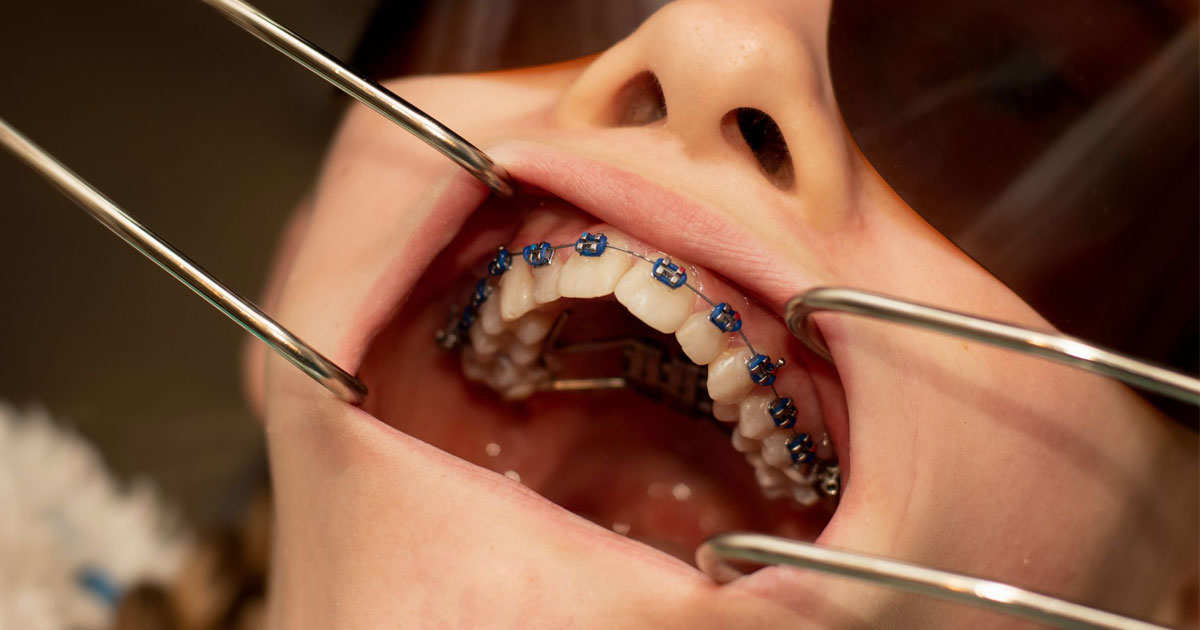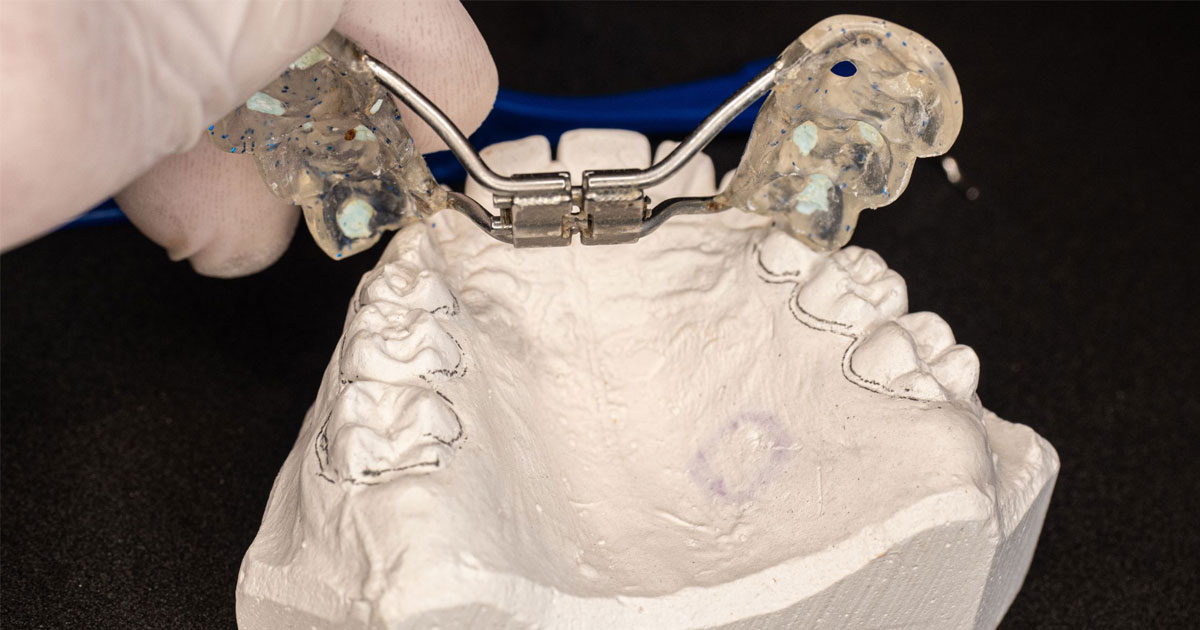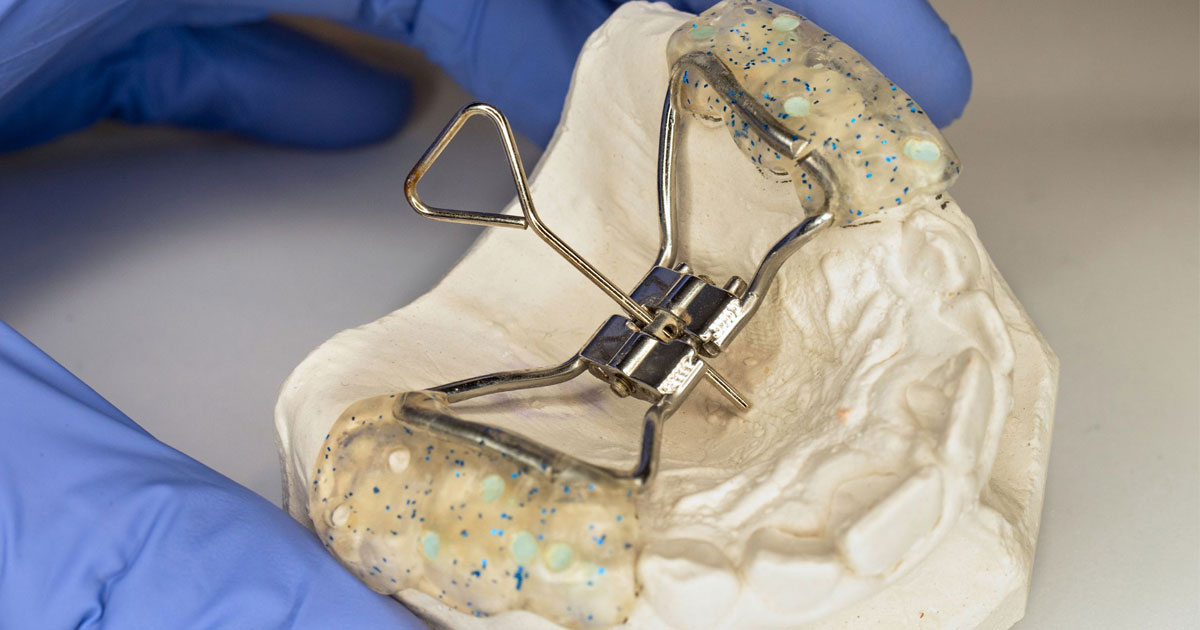A palate expander is an orthodontic device used to correct the dental arch on the roof of a patient’s mouth. The device is appropriately named, as the term “palate” refers to the roof of the mouth. In some patients, the palate needs to be widened (maxillary expansion) before braces can be applied.
Benefits of a Palate Expander
The most significant benefit of using a palate expander is to take advantage of the newly developing bone in a child’s mouth and use it to gently shape the palate. When the bone is just growing in, it is malleable and can be easily directed to avoid malocclusions (bad bites). As the expander gradually applies pressure, expansion at this point is not painful, and the patient will just feel a bit of pressure being exerted along their upper jaw.
Palate expanders can shorten the amount of time the patient will need to wear their braces because there is one less issue to correct. Another benefit to using palate expanders is largely aesthetic. Widening the jaw creates a more aesthetically pleasing smile in addition to helping the teeth to come in straight and in the proper positions.
What is a Palate Expander Used to Correct?

To Correct a Crossbite
A crossbite occurs when an individual’s upper jaw is too narrow, which leads to their back teeth biting down on the inside of the lower teeth rather than the outside as they should. A crossbite can cause jaw discomfort while chewing or talking. This can be corrected with the help of a palate expander, as it broadens the upper jaw and corrects the bite.
Overcrowding Teeth
Overcrowding happens in the mouth when there isn’t enough space for the adult teeth to emerge within a child’s mouth. Even before the child’s adult teeth have come in, orthodontists can determine whether or not there will be adequate room in the mouth. Overcrowded teeth can be corrected with a palate expander because as the upper jaw is widened, there is more space for the adult teeth to emerge normally. This also eliminates the need for tooth extractions to create space.
Impacted Teeth
A tooth that hasn’t erupted yet and remains below the gumline is referred to as “impacted.” These teeth can potentially be blocked by other teeth already in the mouth. Using a palate expander to widen the upper jaw helps all teeth to erupt into the correct spot along the jaw and creates room for impacted teeth to erupt fully. The teeth that are most commonly impacted are the canines, the teeth that are directly under the eyes.
How Does a Palate Expander Really Work?

Then, once the desired result is achieved, the expander is left in the mouth for a few more months. This allows the bones to settle in their new position. In general, the palate expansion process takes about six months.
Palate Expanders: Installation and Adjustment
Palate expanders must be installed by an orthodontic professional, never by the individual themselves. However, the procedure is fairly simple and not painful. First, metal brackets are placed around the four teeth that the palate expander will be attached to. Then, the metal plates and wires are attached to those brackets and connected in the middle with a screw. After the apparatus is placed, the orthodontist will adjust it to ensure the correct amount of tension. The wearer will most likely feel the pressure on their teeth and the roof of the mouth.
Since the two metal plates are connected at the junction with a screw, the expander is adjusted using a key. The key turns the screw which applies more tension and forces the metal plates apart. Such adjustments are gradual and carefully calibrated.
What to Expect Post-Installation
While some patients are bothered by palate expanders at first, it is important to remember that discomfort is mild and short-lived. The most uncomfortable part of the expander process is often the placement of the orthodontic separators that are used to make space between the teeth. The turning of the screw to expand the device can cause a few moments of discomfort, but most patients say adjusting a palate expander is actually less painful than having braces tightened.
Some patients find it strange to eat or speak immediately after having the palate expander placed. However, as the tongue adjusts to the appliance on the roof of the mouth, that sensation should go away soon.
Finally, it is possible that you may notice a small gap forming between your child’s two front teeth. This is normal and simply means that the expander is working well and achieving its desired results. When the child’s adult teeth come in, they will now have the space to do so in the correct position within the mouth, and the front teeth will return to their proper place.
Timing and Length of Treatment
Placement of palate expanders at the right time for the proper length of time is essential to ensure their effectiveness. Because the palate expander is moving the bone while it is still growing, the prime age for placement of an expander is during childhood when the teeth and bones within the mouth are most malleable. Children in the five to sixteen-year-old range have already erupted the majority of their adult teeth. Typically, this also includes adult molars, which helps the orthodontist see which areas need correcting with the palate expander.
As mentioned, after placement, the appliance will typically remain in the child’s mouth for five to six months. This allows the newly formed bone to mature and settle, ideally preventing regression of treatment.
Palate Expander Frequently Asked Questions
While we’ve answered many common palate expander questions above, here are some answers to questions our patients frequently ask.
Palate Expanders and Orthodontic Care at
Robison Orthodontics

Here at Robison Orthodontics, we offer all types of dental and orthodontic treatments for all ages. The recommended age to begin seeing an orthodontist is seven years old, but it is never a bad idea to start looking into orthodontic treatments that your child might need. Palate expanders can be a vital part of the braces process, and getting started sooner will benefit the treatment schedule and the patient.
We understand there are many questions parents and guardians may have regarding their child’s orthodontic treatment. If you’re currently undergoing orthodontic treatment, contact our office, and we’ll be sure to address any questions. If you’re ready to get your child started with their orthodontic treatment now, contact our office to schedule your consultation.

Dr. Tyler Robison is an alum of Mesa’s Mountain View High School. He graduated from Brigham Young University before being accepted to the “Top Ten-nationally ranked” University of Louisville in Kentucky, where he earned his Doctorate in Dental Medicine and a Master’s Degree in Oral Biology. He graduated with honors in the top ten percent of his class. Dr. Robison continued at the University of the Pacific in San Francisco, where he received a second master’s degree in dental science and his orthodontic certification.


